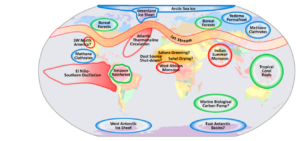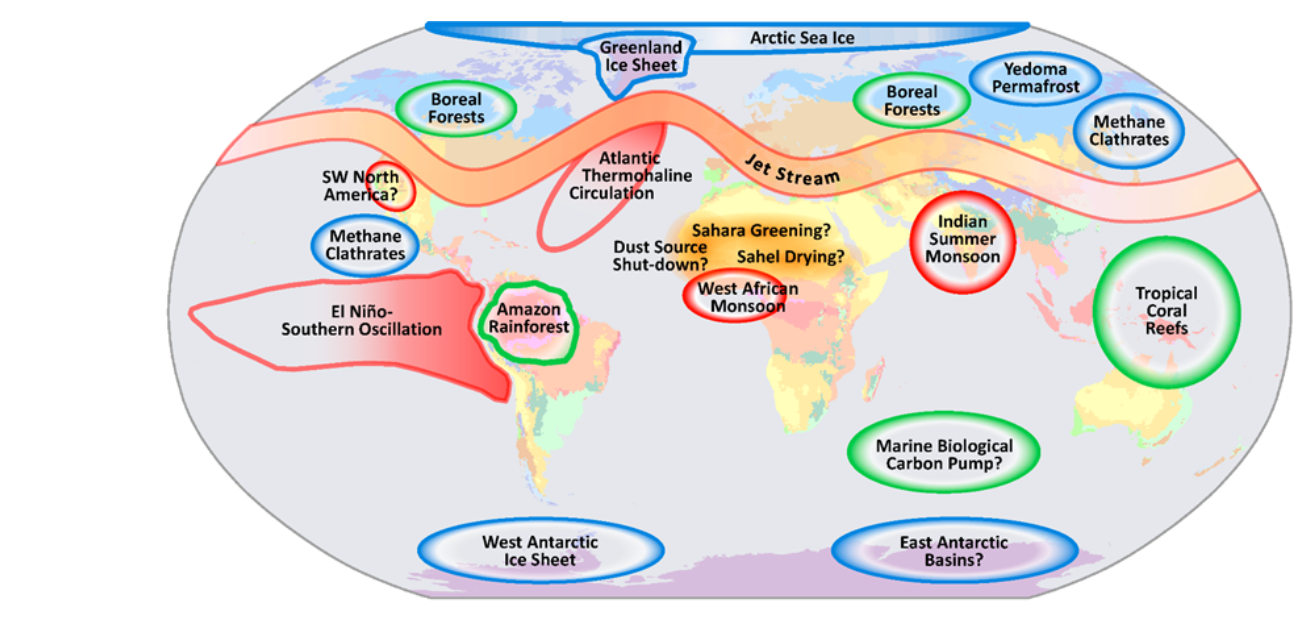
We live in an age of twenty four hour news. And recently, the news cycle has been relentless, with COVID-19, the Ukraine war, cost of living crisis, and even the death of a British monarch.
Sometimes stories that should make us sit and take notice slip through the cracks, destined never to be the major headlines that they should have been.
Last Thursday, on the day the British Queen died, much of the world’s media was only one global story: The Queen is dead. The news reverberated around the world like a giant wave completely consuming the media airways and news agenda.
Also last Thursday, the press had been given an advance copy of an academic article published in Science, titled: “Exceeding 1.5°C global warming could trigger multiple climate tipping points,” due to be published the following day.
The article looked at the concept of “climate tipping points,” which it described as “conditions beyond which changes in a part of the climate system become self-perpetuating.”
As one of the authors involved in the study points out, a good metaphor for a tipping point is a seesaw – if a ball is being pushed up a seesaw but the pushing force is stopped before it reaches the pivot, the ball would roll back to its original place, but after passing the pivot it would carry on rolling until it reaches a new state, even if the pushing stopped.
Because tipping points are either abrupt or irreversible, scientists have long worried about these tipping points: for example, if the Arctic permafrost melts, this releases locked-in methane which causes more permafrost to melt, which releases more methane. If we pass these tipping points, there should be huge cause for concern.
The authors outline that triggering climate tipping points “leads to significant, policy-relevant impacts, including substantial sea level rise from collapsing ice sheets, dieback of biodiverse biomes such as the Amazon rainforest or warm-water corals, and carbon release from thawing permafrost.”
As an article in the New York Times notes yesterday about the study, these kind of changes “would have significant, long-term effects on life on Earth.”
So the bad news is that for five of these tipping points, we may have already passed the point of irreversible change, including the collapse of Arctic and Antarctic ice caps, the slowing down of what is known as the Atlantic Meridional Overturning Circulation (AMOC), which could disrupt rainfall for billions, the loss of the Amazon rainforest, the sudden melting of the permafrost, and loss of all mountain glaciers.
And seven years after the Paris agreement, we are nowhere near achieving the 1.5 degree warming that was agreed. And the warmer we go, the more tipping points we could trigger.
We are already at about 1.1 degrees warming. You only need to look at the climatic chaos of this summer with record drought and heat in many areas and a third of Pakistan currently under water and now facing food shortages.
In fact United Nations Secretary-General Antonio Guterres, who has just finished a visit to the devastated areas of Pakistan, tweeted:
I have never seen climate carnage on the scale of the floods here in Pakistan.
As our planet continues to warm, all countries will increasingly suffer losses and damage from climate beyond their capacity to adapt.
This is a global crisis. It demands a global response. pic.twitter.com/5nqcJIMoIA
— António Guterres (@antonioguterres) September 10, 2022
So we know that 1.1 degrees is not safe. Therefore 1.5 degrees warming and above is even more dangerous. And scientists outline that the “Paris Agreement goal of limiting warming to well below 2°C and preferably 1.5°C is not safe as 1.5°C and above risks crossing multiple tipping points.”
If you go above 1.5 degrees warming, you cross these tipping points that in turn create other tipping points as we enter a vicious cycle. “Currently the world is heading toward ~2 to 3°C of global warming.” The sliver of good news is that “at best, if all net-zero pledges and nationally determined contributions are implemented it could reach just below 2°C.”
Although the scientists concerned are rightly worried, they believe that every degree of warming must be fought over.
Dr. David Armstrong McKay at the University of Exeter in the UK, who is the lead author of the study tells the Guardian: “It’s really worrying. There are grounds for grief, but there are also still grounds for hope. going to hit some tipping points, everything is lost and it’s game over. Every fraction of a degree that we stop beyond 1.5C reduces the likelihood of hitting more tipping points.”
Professor Johan Rockström, the director of the Potsdam Institute for Climate Impact Research, who was part of the study team, adds: “The world is heading towards 2-3C of global warming. This sets Earth on course to cross multiple dangerous tipping points that will be disastrous for people across the world.”
Rockström continues, “to maintain livable conditions on Earth and enable stable societies, we must do everything possible to prevent crossing tipping points.”
Although the study was largely swept away by the tsunami of news last week, commentators on Twitter were quick to highlight its importance:
”The climate crisis has driven the world to the brink of multiple “disastrous” tipping points, according to a major study.
It shows five dangerous tipping points may already have been passed due to the 1.1C of global heating caused by humanity to date.”https://t.co/5LwFj7diLJ— Greta Thunberg (@GretaThunberg) September 10, 2022
This is a critically important new study. It shows that exceeding 1.5 degrees will likely trigger five tipping points, including Greenland and West Antarctic ice sheet collapse. We need radical climate policy to prevent this. https://t.co/5hRRprOsBw pic.twitter.com/QZDPOstmeM
— Jason Hickel (@jasonhickel) September 9, 2022


what is the biggest impact of the increase in temperature?